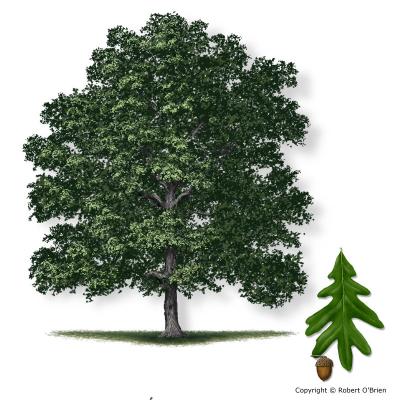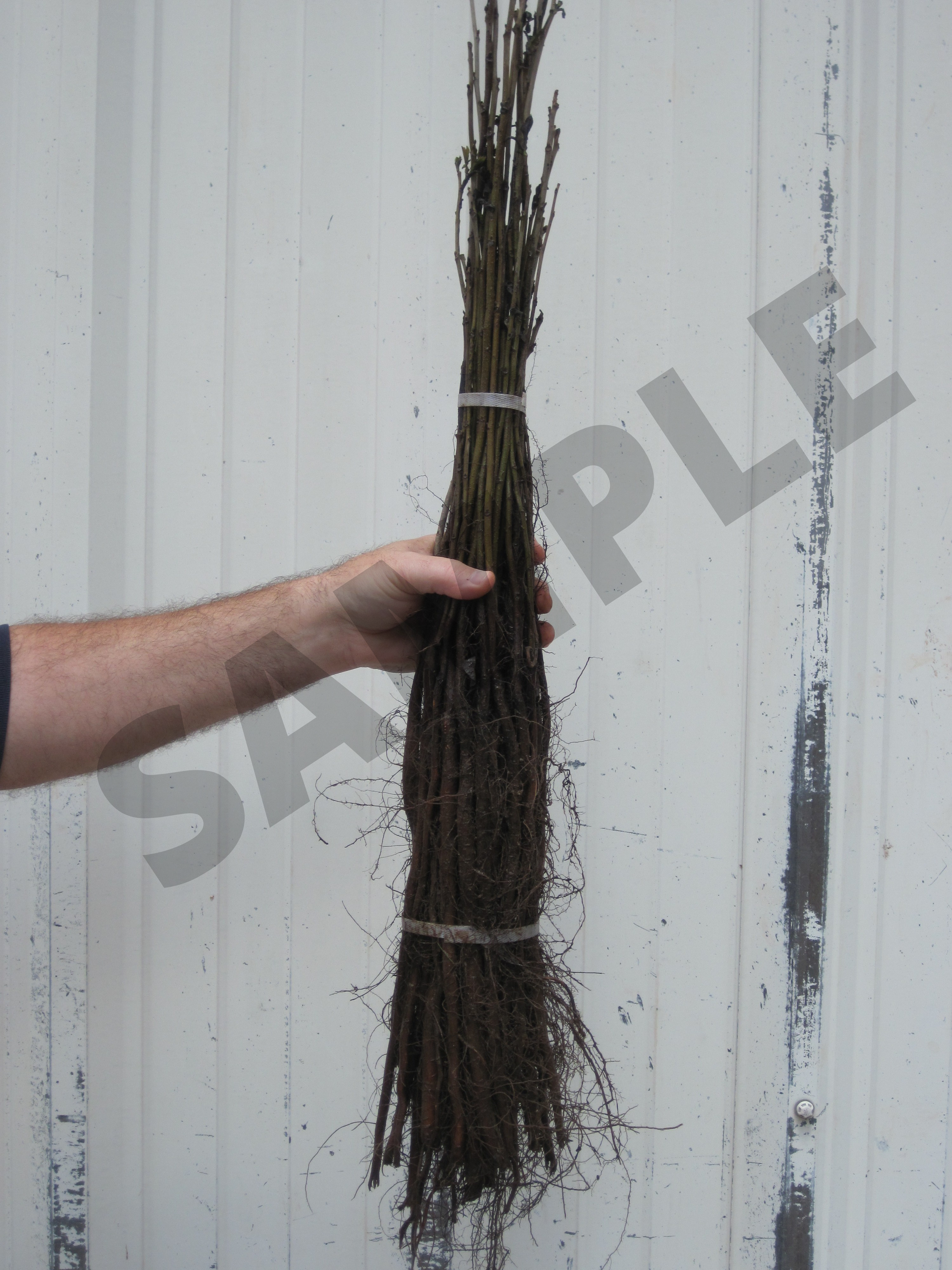Oak, white
Description
White Oak is one of the most beautiful and important species in the ecosystem. It provides a food source for many species and supports the interconnectedness of wildlife. Oak leaf litter also supports various insects during winter months.
White Oak is a key food source for deer, turkey and squirrels and offers nesting sites for birds. Its robust root system stabilizes soil and sequesters substantial amounts of carbon.
It is a large forest or shade tree, growing up to 100 feet tall and a trunk to 3 feet or more in diameter. It has a broad, rounded crown of dense foliage and grows best in full sun. It is common in moist sites of uplands and valleys as well as drier uplands or gravelly ridges. Typically, it grows about 1 to 2 feet per year in its early years, slowing as it matures.
Interesting Facts
Oaks can be separated into two main groups: white oaks and red oaks. While oak wood is often used to make barrels of many kinds, only wood from the white oak group can be used for watertight barrels because the pores in its wood are blocked by structures called “tyloses” that don’t allow liquids to leak out.
-
Price:
$1.00
- SKU: 72
- Type: Hardwood
- Hardiness Zones: 4, 5, 6, 7, 8, 9
- Moisture Zones: Most
- Soil Type: Acidic
- Windbreak: Good
- Erosion Control: Fair
- Wildlife: Superior
- Product Type: Bare-Root Seedlings
In stock
USDA Hardiness Zones
The primary guide to determine plant hardiness is the USDA Hardiness Zone Map, which divides the United States into ten zones based on average minimum temperatures. Each zone is then subdivided into A and B sections. A plant is said to be hardy if it can tolerate the lowest average winter temperature that occurs in a zone. Hardiness is affected by duration and intensity of sunlight; amount and timing of rainfall; length and severity of summer drought; soil characteristics; slope; frost occurrence; humidity; and cultural practices.
For more information or questions contact your nearest forester for advice.

